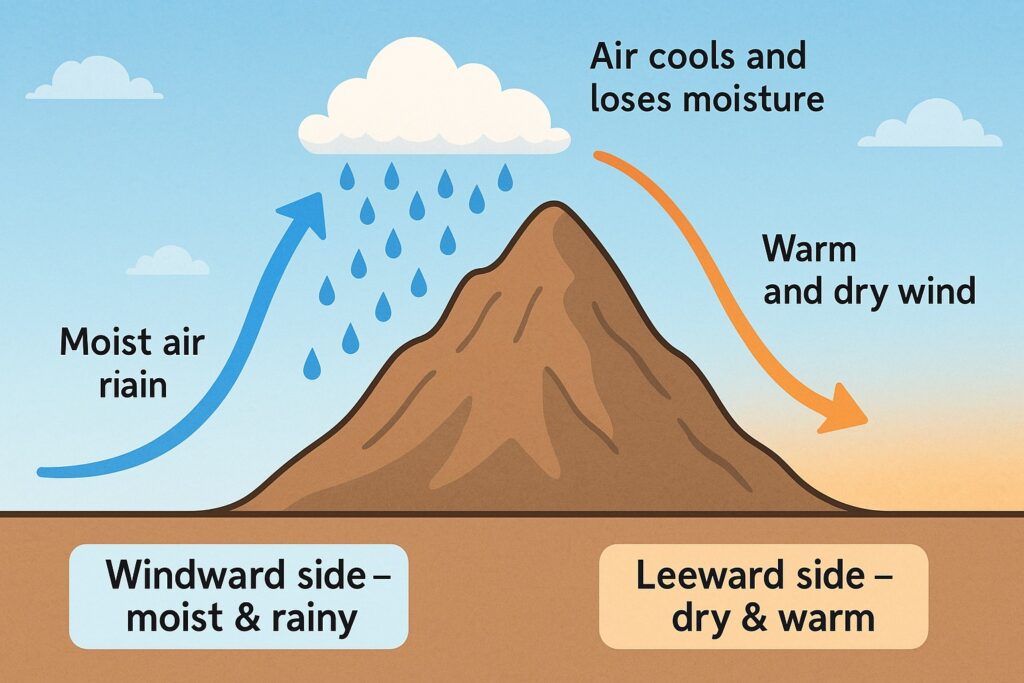Foehn wind is also known as a Chinook wind or a Santa Ana wind. It is a warm and dry wind that occurs when moist air is forced to rise over a mountain range, leading to the release of heat and dry air on the leeward side. The phenomena is common in many mountainous regions like Alps and Rockies.

Table of Contents
What is Foehn Wind?
The wind is a warm and dry wind that occurs when moist air is forced to rise over a mountain range. As the air rises, it cools and releases moisture, which can result in precipitation on the windward side of the mountain. Once the air reaches the leeward side, it is dry and warm, as much of the moisture has already been released. The result is a warm and dry wind that can have a significant impact on the environment and human society.
Causes of Foehn Wind
The wind is caused by the orographic lifting of moist air over a mountain range. As the air rises, it cools and releases moisture, which can result in precipitation on the windward side of the mountain. Once the air reaches the leeward side, it is dry and warm, leading to the formation of a Foehn wind.
Impacts of Foehn Wind
the wind can have both positive and negative impacts on the environment and human society. On the positive side, Foehn wind can lead to warmer temperatures and dry conditions, which can be beneficial for agricultural production and outdoor activities. Foehn wind can also help to clear pollutants from the air, leading to improved air quality.
However, the wind can also have negative impacts on the environment and human society. In some cases, the wind can lead to the formation of wildfires, as the warm and dry conditions can make vegetation more susceptible to ignition. Foehn wind can also cause damage to buildings and infrastructure, as the dry and warm conditions can lead to cracking and shifting of the ground.
Preventing Impacts
Preventing the impacts of the wind requires a combination of proactive measures and emergency response planning. This can include measures such as monitoring weather patterns and issuing warnings to the public when high-risk conditions are expected. It can also involve implementing land management practices that reduce the risk of wildfires and building infrastructure that is more resilient to shifting ground conditions.
Conclusion
It is a natural phenomenon that can have both positive and negative impacts on the environment and human society. By understanding its causes and impacts, we can take proactive measures to prevent negative impacts and harness the benefits of this wind. Ultimately, this will help to promote the health and well-being of communities around the world.
Read: Geography Notes